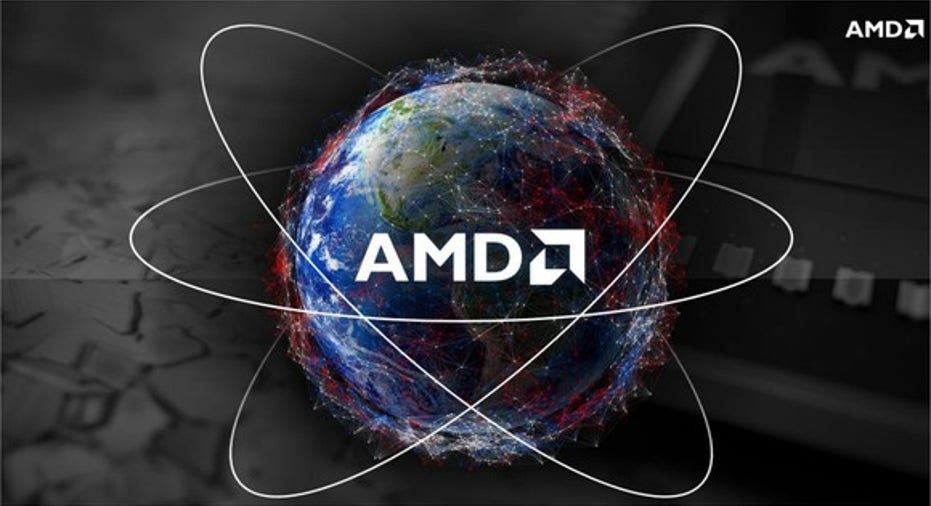Advanced Micro Devices Inc's Biggest Mistake in 2016 So Far

2016 has been a great comeback year for AMD (NASDAQ: AMD). The chipmaker posted 9% annual sales growth lastquarter, representing its first quarter of growth in two years. It also believes sales will rise 18% for the current quarter, while analysts forecast 3% sales growth for the year.
That growth was fueled by robust demand for its semi-custom SoCs for gaming consoles, and that momentum should continue as Sony and Microsoftroll out their PS4 Neo, Xbox One S, and Xbox Scorpio updates. The upcoming launch of its Zen CPU for PCs could also finally enable AMD toregain some lost ground against Intel (NASDAQ: INTC).
Image source: AMD.
Those positive catalysts all boosted AMD stock over 150% to a multi-year high this year, but investors shouldn't gloss over the company's missteps. Let's take a look back at AMD's biggest mistake this year -- the underwhelming launch of its RX 480 GPU -- and what the chipmaker should learn from that blunder.
But first, a brief history lesson
To understand why the RX 480 was so disappointing, we should first discuss AMD's ongoing battle against Nvidia (NASDAQ: NVDA). After AMD bought GPU maker ATI in 2006, it claimed nearly half of the dedicated GPU market with its Radeon cards. But by the first quarter of 2016, AMD controlled just 23% of the market, according to research firm JPR, while Nvidia heldthe remaining 77%.
AMD lost market share because it was fighting two tough wars -- one in x86 CPUs against Intel and another in GPUs against Nvidia. As a result, AMD lacked the R&D resources to keep pace with both rivals in chip architecture and power efficiency. To remain competitive, AMD targeted the low-end market in CPUs and GPUs, promising nearly comparable performance as Intel or Nvidia for a lower price tag.
In GPUs, AMD boosted clock speeds instead of developing more power-efficient architectures -- which meant that AMD cards generally consumed more power and ran hotter than Nvidia ones. Those weren't attractive qualities for desktop PC gamers. But with the Polaris-based RX 460, 470, and 480 chips, AMD wanted to change that perception with a more efficient 14nm FinNET architecture. It also heavily promoted the 4GB version of the RX 480, which costs $200, as the cheapest GPU for "VR ready" PCs.
So what happened to the RX 480?
The initial reviews for the RX 480 were extremely promising. Extremetech called the cardthe "best $200 GPU you can buy today."But during the RX 480's launch week, early buyers reported that the card wasdestroying motherboards by drawing too much power from PCIe slots. AMD quickly rectified the issue with an updated driver, but the public's first impression of the RX 480 was already tainted.
Shortly afterwards, Nvidia launched the GTX 1060, a competing "VR ready" card with 6GB for RAM, for $250. According to an average of several thousand benchmarks on UserBenchmark, the GTX 1060 is 11% faster than the RX 480, with15% higher all-around performance. This puts a lot of pressure on AMD, since some gamers are probably willing to pay $50 more for 50% more RAM with 15% higher performance.
But Nvidia didn't stop there. It recently launched a 3GB variant ofthe GTX 1060 for $200, clearly aimed at knocking out the RX 480 as the "best $200 GPU" on the market. There aren't any benchmark comparisons between this new version and the RX 480 yet, but a Nvidia spokesman recently told PC World that the 3GB version of the GTX 1060 would be "about 10% faster" than the 8GB version of the RX 480, which costs $240. If that estimate is accurate, AMD could soon lose the low-end "VR ready" GPU market to Nvidia.
What that loss would mean for AMD
If Nvidia marginalizes AMD in the low-end GPU market, AMD's Computing and Graphics (CPU and GPU) revenue, which fell 15% annually last quarter, will continue declining. As a result, investors might need to wait until AMD launches its next-gen GPU Vega -- which is expected toarrive next year -- to retaliate against Nvidia.
AMD's Polaris-based GPUs aren't bad, but they arguably can't compete effectively against Nvidia's Pascal-based GTX cards. Nvidia knows precisely how to strike AMD for maximum damage, and AMD's GPU sales might wither over the next few quarters as budget-minded gamers gravitate toward the GTX 1060.
A secret billion-dollar stock opportunity The world's biggest tech company forgot to show you something, but a few Wall Street analysts and the Fool didn't miss a beat: There's a small company that's powering their brand-new gadgets and the coming revolution in technology. And we think its stock price has nearly unlimited room to run for early in-the-know investors! To be one of them, just click here.
Leo Sun has no position in any stocks mentioned. The Motley Fool owns shares of and recommends Nvidia. The Motley Fool owns shares of Microsoft. The Motley Fool recommends Intel. Try any of our Foolish newsletter services free for 30 days. We Fools may not all hold the same opinions, but we all believe that considering a diverse range of insights makes us better investors. The Motley Fool has a disclosure policy.



















